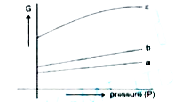Colloids represent a state of ……………..and not a class of substances.
The correct Answer is:Matter
Step-by-Step Solution:
1. Understanding Colloids: Colloids are defined as mixtures where the particle size ranges from 1 to 1000 nanometers. This range is crucial in distinguishing colloids from other types of mixtures, such as solutions and suspensions.
2. Characteristics of Colloids: Colloids exhibit unique properties, such as the Tyndall effect, where light is scattered by the colloidal particles. This is a key feature that helps identify colloidal systems.
3. Behavior Under Different Conditions: Colloids can behave differently depending on the medium they are in. For instance, sodium chloride (common salt) behaves as a colloid when dissolved in water but may act as a crystalloid in a non-polar solvent like benzene. This variability indicates that colloids are not a fixed class of substances but rather a state of a system.
4. Conclusion: Given that colloids can change their behavior based on conditions and are defined by their particle size, we conclude that colloids represent a "state of substance" rather than a specific class of substances.
5. Final Answer: Colloids represent a state of substance and not a class of substances.
---
Topper's Solved these Questions
- SURFACE CHEMISTRYBOOK - CENGAGE CHEMISTRY ENGLISHCHAPTER - SURFACE CHEMISTRYEXERCISE - Exercises True /False
20 Videos
- SURFACE CHEMISTRYBOOK - CENGAGE CHEMISTRY ENGLISHCHAPTER - SURFACE CHEMISTRYEXERCISE - Archives Multiple Correct
3 Videos
- SURFACE CHEMISTRYBOOK - CENGAGE CHEMISTRY ENGLISHCHAPTER - SURFACE CHEMISTRYEXERCISE - Exercises Interger
8 Videos
- SOLUTIONSBOOK - CENGAGE CHEMISTRY ENGLISHCHAPTER - SOLUTIONSEXERCISE - Ex 2.3 (Objective)
9 Videos
- SYNTHETIC AND NATURAL POLYMERSBOOK - CENGAGE CHEMISTRY ENGLISHCHAPTER - SYNTHETIC AND NATURAL POLYMERSEXERCISE - Exercises Assertion Reasoning
10 Videos
Similar Questions
Does colloidal state represent a different class of substance? Comment.
View SolutionCollidal solution is a heterogeneous solution which contains particle of intermediate size, i.e., (diameter between 1 and 1000 nm) colloidal is not a substance but it is a state of a substance which depends upon the molecular size. Colloidal solutions are intermediate between ture solution and suspensions.
The size of the colloidal particles lies in the range
View SolutionCollidal solution is a heterogeneous solution which contains particle of intermediate size, i.e., (diameter between 1 and 1000 nm) colloidal is not a substance but it is a state of a substance which depends upon the molecular size. Colloidal solutions are intermediate between ture solution and suspensions.
The colloidal particle can pass through
View SolutionCollidal solution is a heterogeneous solution which contains particle of intermediate size, i.e., (diameter between 1 and 1000 nm) colloidal is not a substance but it is a state of a substance which depends upon the molecular size. Colloidal solutions are intermediate between ture solution and suspensions.
The difference between a lyophilic and lyophobic colloid is their
View SolutionCollidal solution is a heterogeneous solution which contains particle of intermediate size, i.e., (diameter between 1 and 1000 nm) colloidal is not a substance but it is a state of a substance which depends upon the molecular size. Colloidal solutions are intermediate between ture solution and suspensions.
Chemisorption
View SolutionCollidal solution is a heterogeneous solution which contains particle of intermediate size, i.e., (diameter between 1 and 1000 nm) colloidal is not a substance but it is a state of a substance which depends upon the molecular size. Colloidal solutions are intermediate between ture solution and suspensions.
The colloidal solution of a solid as the disperesed phase and a gas as the dispersed medium is called
View SolutionDefine gaseous state of a substance.
View SolutionThe following curve represents the variation of Gibbs function 'G' with pressure at constant temperature. Correct match of given plots with the physical state of a substance is

View SolutionWhich of the following represents an excited state of an atom?
View SolutionComment on the statement that colloid is not a substance but state of a substance
View Solution
